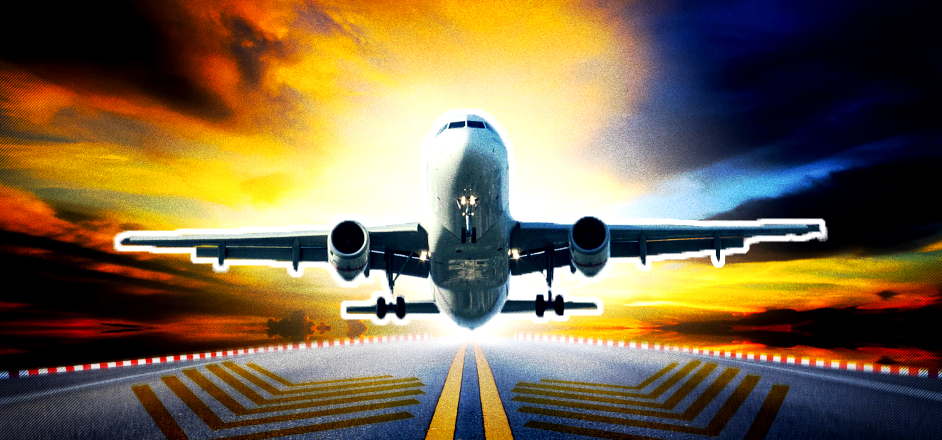Look out the window right now.
Do it.
See the sky up there? Yeah. You're not supposed to be in it. It doesn't want you there. You're a human. You're supposed to stay on the ground.
Turbulence is the sky's way of reminding you about that little fact. And while it's traditionally been little more than a mild terror as you float, helpless, seven miles above the Earth, it's about to get a whole lot worse. We're talking "Let's just drive to Hawaii, babe" worse.
Disturbing new research has discovered that increasing temperatures due to rising CO2 levels is about to intensify the turbulence airplane passengers feel by a horrifying degree. In fact, turbulence strong enough to throw unbuckled passengers around the cabin of a plane could become three times more common thanks to climate change, which does, despite what Trump thinks, exist. Fucking idiot.
Anyway.
This is according to researchers are the University of Reading, who just released a study that found the average amount of light turbulence in the atmosphere is likely to increase by 59 percent. Light-to-moderate turbulence will increase by 75 percent, moderate turbulence will jump 94 percent, the moderate-to-severe kind will rise 127 percent. Now for the kicker — severe turbulence will skyrocket by a whopping 149 fucking percent, meaning you're almost guaranteed to spill your half-can of tomato juice (which, by the way, people only drink on planes).
This fun finding is due to warming ocean temperatures, which generate stronger wind within the jet stream and destabilizes the atmosphere to a thoroughly uncomfortable degree unfit for human travel.
“For most passengers, light turbulence is nothing more than an annoying inconvenience that reduces their comfort levels, but for nervous fliers even light turbulence can be distressing," the researchers said. “However, even the most seasoned frequent fliers may be alarmed at the prospect of a 149 percent increase in severe turbulence, which frequently hospitalizes air travelers and flight attendants around the world.”
… Wait, did they just say "hospitalize?"
Afraid so.
Every year in the US, an average of 55 serious and 687 minor turbulence injuries are caused as a result of the sky angrily shaking its fists at humanity and our misguided Promethean belief that we're birds. However, the actual injury rate is likely to be much higher, as many injuries are not reported. Other studies estimate there could be up to 5,000 encounters with extra beefy bumpiness each year.
One particularly notable one happened in our own state — on December 9, 1992, extreme clear-air turbulence tore almost 20 feet off the left wing of a plane flying over Colorado, causing the plane to lose one of its four engines. Spoiler alert: they were fine and landed the plane safely, but … turbulence isn't always quite as inconsequential as your pretzel-bearing flight attendants would have you believe.
Just this past August, 24 passengers were injured on a JetBlue flight from Boston to Sacramento after the plane ran into unexpected turbulence. Similarly, 12 people were tossed about like one dollar bills in strip club on a United flight for Houston from London … also last August.
In other news, don't fly in August.
It exactly doesn't help any of this that our country's leaders refuse to acknowledge the existence of climate change. With no caps to our contribution to rising CO2 levels, there's no doubt that much of the increasing air travel discomfort — and injury — from all that added bumpiness will ironically be our own fault. We'll be all pissed our flight was bumpy, then hypocritically drive ourselves home in our Hummers.
Airlines and airplane manufacturers are taking precautions, however (or, at least we'll pretend they do in order to make ourselves feel better). Boeing, for example, recently implemented new technology on their 787-10 Dreamliners that detects turbulence ahead and send signals to computers controlling the rudder, ailerons, and other control surfaces in order to dampen the effects of turbulence before passengers even feel them. And pilots are well-trained in how to handle turbulence. They often get real-time updates on patches of bitchy air from air traffic controls well before they hit it so they have enough time to reroute.
Here's to hoping there's somewhere to reroute to now that the sky will feel like the tactile equivalent of a Skrillex "song."



Leave a Reply
You must be logged in to post a comment.